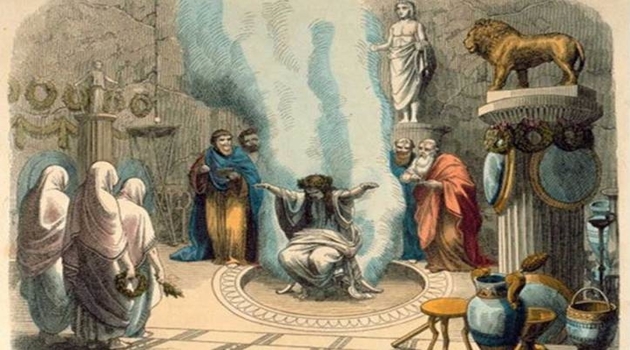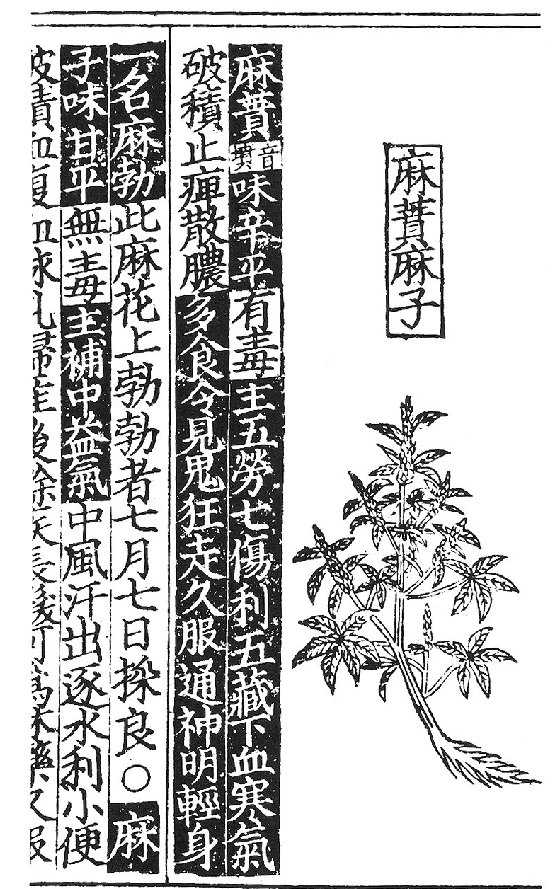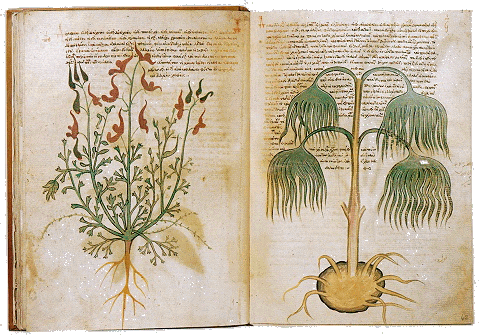
History of Cannabis: BCE to CE
I’m not ashamed to say it. I’ve embraced it. I’m nerdy. It’s like a badge of honor I wear. You see, there is nothing wrong with finding joy in reading. For this posting, I continue on the path towards modern day. I wanted to share some interesting points in cannabis history that I thought were interesting. It’s only within the last century, that society has made the u-turn on this plant. Through history we can see where our ancestors went astray and we can learn how to return balance to our society.
200 BCE: Hemp rope appears in Greece.
Hemp rope dated to circa 200 BCE has been discovered in tombs in northern Greece, and it is believed that textiles for garment-making were also produced. Cannabis fiber was widely used in the manufacture of rope, sailcloth, and other textiles—in rope-making, cannabis was specifically used to make nautical ‘reefing ropes’ known in ancient Greek as kaloi.

100 BCE: First evidence of hemp paper, invented in China.
Paper is probably one of the most significant Chinese inventions. Fragments of paper containing hemp fiber have been found in Chinese graves dating to the first century B.C. The Chinese made paper by crushing hemp fibers and mulberry tree bark into a pulp and putting the mixture into a tank of water. The tangled fibers rose to the top of the water, were removed, and placed in a mold. After drying, the fibers formed sheets that could be written on. The Chinese kept paper making a secret for many centuries. Eventually the secret became known to the Japanese during the 5th century A.D. and finally to the Arabs through Chinese prisoners in the 9th century.

100-0 BCE: The psychotropic properties of Cannabis are mentioned in the newly compiled herbal Pen Ts’ao Ching.
Chinese medicine employs complex mixtures of remedies and does not appreciate the advantage or effectiveness of a single drug entity. Chinese herbal remedies are derived from animal, mineral, as well as arboreous and herbaceous sources. At least 1,500 different herbal drugs have been tested, analysed, and used in Chinese medicine; this is well documented in more than 50 different or revised editions of Pen-ts’ao. Both Sheng-nung Pen-ts’ao Ching, the earliest Chinese materia medica book, and the latest Pen-ts’ao Kang-mu are well-known and valuable compendia of herbal drugs.
0-100 CE Construction of Samaritan gold and glass paste stash box for storing hashish, coriander, or salt, buried in Siberian tomb.

23-79 CE Pliny the Elder’s The Natural History mentions hemp rope and marijuana’s analgesic effects.
Pliny’s Natural History is a book about the whole of the natural world in Latin by Pliny the Elder, a Roman author and naval commander who died in 79 AD.
It is one of the largest single works to have survived from the Roman Empire to the modern day and purports to cover all ancient knowledge. The work’s subject area is thus not limited to what is today understood by natural history; Pliny himself defines his scope as “the natural world, or life”. It is encyclopedic in scope, but its structure is not like that of a modern encyclopedia.
The work is divided into 37 books, organised into ten volumes. These cover topics including astronomy, mathematics, geography, ethnography, anthropology, human physiology, zoology, botany, agriculture, horticulture, pharmacology, mining, mineralogy, sculpture, painting, and precious stones.
Pliny’s Natural History became a model for later encyclopedias and scholarly works as a result of its breadth of subject matter, its referencing of original authors, and its index. The work is dedicated to the emperor Titus, a son of Pliny’s close friend, the emperor Vespasian, in the first year of Titus’s reign. It is the only work by Pliny to have survived, and the last that he published. He began it in 77, and had not made a final revision at the time of his death during the AD 79 eruption of Vesuvius.

70 CE: Dioscorides’ Pharmacopoeia
The physician Dioscorides recorded cannabis in his pharmacopoeia; it is thought that cannabis was extensively used in Greek medicine by this time. Cannabis leaf was commonly prescribed as a cure for nosebleeds, and the seeds were used to treat tapeworms, earache and inflammation.
The travels Dioscorides made as a surgeon with the armies of the Roman emperor Nero provided him an opportunity to study the features, distribution, and medicinal properties of many plants and minerals. It documented the description and direct observations of plants, fruits, seeds, the effects that various drugs had on patients. Excellent descriptions of nearly 600 plants along with a number of therapeutically useful animal and mineral products, including colchicum, water hemlock, peppermint and cannabis, are contained in the Materia Medica.
Book one describes the uses for aromatic oils, salves and ointments, trees and shrubs, and fleshy fruits, even if not aromatic. Book two included uses for animals, parts of animals, animal products, cereals, leguminous, malvaceous, cruciferous, and other garden herbs. Book three detailed the properties of roots, juices, herbs and seeds,used for food or medicine. Book four continued to describe the uses for roots and herbs, specifically narcotic and poisonous medicinal plants. Book five dealt with the medicinal uses for wine and metallic ores.
In book Three hemp is described: “Cannabis indica -the root (boiled and applied) is able to lessen inflammation, dissolve oedema, and disperse hardened matter around the joints.’ and ‘Cannabis sativa is a plant of considerable use for twisting very strong ropes. The seeds eaten in quantities quench conception and the herb (juiced while green) is good for earaches.”
I hope you enjoyed this month’s history lesson on things not normally known about cannabis. Make sure to follow Dabbin Dad for all things cannabis.


